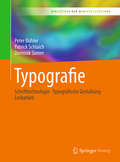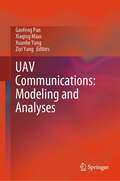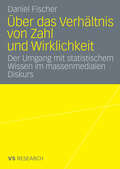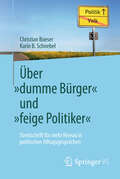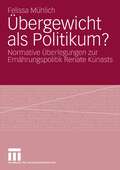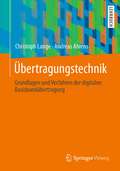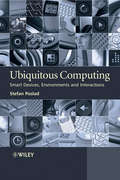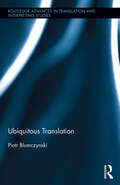- Table View
- List View
Type Styles (UEB uncontracted)
by RnibThis page shows printed characters (letters) in two typefaces, Times New Roman and San-serif. Both are presented in regular, italic, bold and bold italic type styles, all in upper and lower case. There is a locator dot shown, which will be at the top left of the page when the image is the right way up. Across the top half of the page is Times New Roman in 72 point size. Across the bottom half of the page is San-serif in 72 point size.
Typeface Size and Categories (large print)
by RnibThis page shows printed characters (letters) in three different type sizes, and two of the main classes of typeface: serif and san-serif (without serifs). There is a locator dot shown, which will be at the top left of the page when the image is the right way up. In the top portion of the page there are three groups of characters increasing in size from 24 point on the left to 72 point on the right. At the bottom left of the page is a capital A with serifs, and on the right another A with no serifs.
Typeface Size and Categories (UEB contracted)
by RnibThis page shows printed characters (letters) in three different type sizes, and two of the main classes of typeface: serif and san-serif (without serifs). There is a locator dot shown, which will be at the top left of the page when the image is the right way up. In the top portion of the page there are three groups of characters increasing in size from 24 point on the left to 72 point on the right. At the bottom left of the page is a capital A with serifs, and on the right another A with no serifs.
Typeface Size and Categories (UEB uncontracted)
by RnibThis page shows printed characters (letters) in three different type sizes, and two of the main classes of typeface: serif and san-serif (without serifs). There is a locator dot shown, which will be at the top left of the page when the image is the right way up. In the top portion of the page there are three groups of characters increasing in size from 24 point on the left to 72 point on the right. At the bottom left of the page is a capital A with serifs, and on the right another A with no serifs.
Typografie: Schrifttechnologie - Typografische Gestaltung - Lesbarkeit (Bibliothek der Mediengestaltung)
by Peter Bühler Patrick Schlaich Dominik SinnerDieser Band der „Bibliothek der Mediengestaltung“ behandelt die Schrifterkennung und Schriftklassifikation, die Lesbarkeit von Schrift und den gestalterischen und technischen Einsatz von Schriften. Außerdem werden die Schrifttechnologie und die Verwaltung von Schriften thematisiert. Für diese Bibliothek wurden die Themen des Kompendiums der Mediengestaltung neu strukturiert, vollständig überarbeitet und in ein handliches Format gebracht. Leitlinien waren hierbei die Anpassung an die Entwicklungen in der Werbe- und Medienbranche sowie die Berücksichtigung der aktuellen Rahmenpläne und Studienordnungen sowie Prüfungsanforderungen der Ausbildungs- und Studiengänge.Die Bände der „Bibliothek der Mediengestaltung“ enthalten zahlreiche praxisorientierte Aufgaben mit Musterlösungen und eignen sich als Lehr- und Arbeitsbücher an Schulen sowie Hochschulen und zum Selbststudium.
U.S. Militarism and the Terrain of Memory: Negotiating Dead Space (Media, War and Security)
by John BechtoldThis book analyzes how the Iraqi city of Fallujah became registered as a setting for military heroics in American memory.In 2004, the U.S. military conducted two disastrous assaults in Fallujah, Iraq. More than 1,000 citizens were killed, and, according to the military’s own estimate, upwards of 200,000 people were displaced because of the violence. Yet, despite this human catastrophe, the kind of information that emerged in the public domain during the battle foregrounded the soldier's experience in war while effacing the destruction of Iraqi bodies. This tendency to foreground the soldier body is a direct result of the military’s intervention in what they conceptualize as the "information environment." This book draws from the second assault in Fallujah as a case study to explicate the military’s investment in this perspectival space, which is a consequence both of the mediatization of contemporary war and of the need to influence knowledge considered unfavorable to military operations. In short, the military enlists the media in their targeting process to produce information that is then deployed as persuasive force to modify the beliefs of specific target populations. When the cultural texts produced by the media are remediated in the public domain after war, they can be thought of as martial constructs because they originated during war through the military’s systemized attempt to influence knowledge. That is, these texts trace to a specific battlefield objective. This book reframes the notion of propaganda as a generalized public relations strategy into a more acute and coordinated attempt to decontextualize specific knowledge in the information environment.This book will be of much interest to students of media and communication studies, war studies, memory studies, and international relations.
U.S. Militarism and the Terrain of Memory: Negotiating Dead Space (Media, War and Security)
by John BechtoldThis book analyzes how the Iraqi city of Fallujah became registered as a setting for military heroics in American memory.In 2004, the U.S. military conducted two disastrous assaults in Fallujah, Iraq. More than 1,000 citizens were killed, and, according to the military’s own estimate, upwards of 200,000 people were displaced because of the violence. Yet, despite this human catastrophe, the kind of information that emerged in the public domain during the battle foregrounded the soldier's experience in war while effacing the destruction of Iraqi bodies. This tendency to foreground the soldier body is a direct result of the military’s intervention in what they conceptualize as the "information environment." This book draws from the second assault in Fallujah as a case study to explicate the military’s investment in this perspectival space, which is a consequence both of the mediatization of contemporary war and of the need to influence knowledge considered unfavorable to military operations. In short, the military enlists the media in their targeting process to produce information that is then deployed as persuasive force to modify the beliefs of specific target populations. When the cultural texts produced by the media are remediated in the public domain after war, they can be thought of as martial constructs because they originated during war through the military’s systemized attempt to influence knowledge. That is, these texts trace to a specific battlefield objective. This book reframes the notion of propaganda as a generalized public relations strategy into a more acute and coordinated attempt to decontextualize specific knowledge in the information environment.This book will be of much interest to students of media and communication studies, war studies, memory studies, and international relations.
U.S. Official Propaganda During the Vietnam War, 1965-1973: The Limits of Persuasion (History and Politics in the 20th Century: Bloomsbury Academic)
by Caroline PageUnited States involvement in the Vietnam War was one of the most important events in the post-World War II period. The political, social and military consequences of US involvement and defeat in Vietnam have been keenly felt within the US and the international community, and the 'lessons' learned have continued to exert an influence to the present day. This book focuses on the effects of US propaganda on America's Western allies – particularly France, West Germany and Great Britain – from the time when the Vietnam War began to escalate in February 1965, to the American withdrawal and its immediate aftermath. One of its main aims is to assess the amount and veracity of information passed on by the US administration to allied governments and to compare this with the level of public information on the war within those countries.
UAV Communications: Modeling and Analyses
by Gaofeng Pan Xiaqing Miao Xuanhe Yang Ziyi YangThis book provides a comprehensive treatment of the performance evaluation of UAV communication systems, using stochastic geometry to explore the impact of the random positions of UAVs on transmission performance. The book focuses on engineering practice, with both modeling and analysis of UAV communication systems. It offers an in-depth study of several important UAV communication application scenarios, including UAV-terrestrial communication, UAV-to-UAV communication, satellite-UAV communication, and UAV relay communication.One of the key features of the book is its systematic approach to addressing UAV communication issues and providing practical insights. The book is especially useful for readers interested in learning how to model and analyze the performance of UAV communications systems. It will benefit researchers, engineers, and graduate students in the fields of wireless communications, signal processing, and related areas.
Über das Verhältnis von Zahl und Wirklichkeit: Untersuchung über den Umgang mit statistischem Wissen im massenmedialen Diskurs über Arbeitslosigkeit
by Daniel FischerÜber „dumme Bürger“ und „feige Politiker“: Streitschrift für mehr Niveau in politischen Alltagsgesprächen
by Christian Boeser Karin B. SchnebelDas Niveau in politischen Alltagsgesprächen ist oftmals weitaus niedriger, als es dem Niveau der Diskutanten entsprechen würde. In dieser Streitschrift geht es den Autoren nicht nur darum, diese Behauptung zu belegen, sondern vor allem auch darum, deutlich zu machen, dass dies ein Problem darstellt für die Qualität von Politik und die Qualität von Demokratie, mithin für die Qualität des Zusammenhalts unserer Gesellschaft. Wenn insbesondere die Bürger sich ihrer Verantwortung nicht stellen, führt dies zu einer stärkeren Abschottung der Politiker und zu einer "feigen" Politik. Wir brauchen daher eine politische Alltagskultur, welche die Komplexität von Politik ernst nimmt und den Politikern nicht von vornherein jede Seriosität abspricht.
Übergewicht als Politikum?: Normative Überlegungen zur Ernährungspolitik Renate Künasts
by Felissa MühlichÜbergewicht wird politisiert. Es wird als Problem im politischen Raum kommuniziert und mit der Erwartung verknüpft, die Politik könne ihm zu Leibe rücken. In Deutschland hatte Renate Künast einen wesentlichen Anteil an dieser Politisierung. Sie hat das Thema unter Stichworten wie Chancengleichheit und Kostenentwicklung im Gesundheitswesen zum Gegenstand koordinierten staatlichen Handelns und auch moralischer Appelle gemacht. Sollte das unter normativen Gesichtspunkten aber so sein? Wird so nicht eine genuine Privatangelegenheit, unsere Ernährungsgewohnheiten, ins Licht der Öffentlichkeit gezerrt und damit vielleicht sogar zur Stigmatisierung übergewichtiger Menschen beigetragen? Wenn unsere Ernährungsweise begründet als Teil des Privaten verstanden werden kann, was bedeutet das wiederum für die Politik? Welche Maßnahmen erscheinen dann eher problematisch und welche geboten? Mit diesen Fragen befasst sich Felissa Mühlich.
Übersetzen im Wandel: Wie Technologisierung, Automatisierung und Künstliche Intelligenz das Übersetzen verändern
by Christoph Rösener Carmen Canfora Torsten Dörflinger Felix Hoberg Simon VargaDer Fachbereich Translations-, Sprach- und Kulturwissenschaft (FTSK) Germersheim der Johannes Gutenberg-Universität Mainz feierte im Jahr 2022 sein 75-jähriges Bestehen. Dieses Jubiläum nahm der Germersheimer Arbeitsbereich Allgemeine und Angewandte Sprachwissenschaft sowie Translationstechnologie (ASTT) zum Anlass, im Rahmen einer Tagung 2022 einen Blick nicht auf die Vergangenheit, sondern die Zukunft des Übersetzerberufs zu werfen. Im Zentrum des Interesses standen dabei die Auswirkungen, die der Übersetzerberuf und die Übersetzerausbildung im Zuge des digitalen Wandels erfahren, der insbesondere in Gestalt der Maschinellen Übersetzung und der fortschreitenden Automatisierung von Übersetzungsprozessen die Branche zunehmend prägt.Welche Kompetenzen müssen Studierenden heute vermittelt werden, damit sie in der Berufswelt von morgen ihren Platz finden? Wie kann man sie mit einer positiven Haltung dem digitalen Wandel gegenüber ausstatten und ihnen somit eine aktive Rolle in diesemSystem ermöglichen?
Übertragungstechnik: Grundlagen und Verfahren der digitalen Basisbandübertragung
by Christoph Lange Andreas AhrensDieses Lehrbuch ist eine einführende Darstellung der Übertragung digitaler Signale über gestörte Kanäle. Schwerpunkt ist die physikalisch-anschauliche und zugleich mathematisch-fundierte Erklärung der Übertragung im Basisband. Dazu werden notwendige Grundlagen der Signal- und Systemtheorie rekapituliert und funktionale Abhängigkeiten bei der Basisbandübertragung herausgearbeitet, um ein Verständnis der grundlegenden Probleme bei der Nachrichtenübertragung zu ermöglichen. Als wichtiger Übertragungskanal wird das Kupferkabel betrachtet und seine übertragungstechnischen Eigenschaften werden mit klassischen elektrotechnischen und systemtheoretischen Methoden beschrieben. Die zuvor beschriebenen Basisbandverfahren werden zur Übertragung über den linear verzerrenden Kanal eines Kupferkabels angewendet und Möglichkeiten der Filterung und Entzerrung erläutert. Dem einführenden Charakter des Lehrbuches entsprechend werden jeweils ausführliche Herleitungen angegeben sowie numerische Beispiele und eine Vielzahl von Abbildungen verwendet.
Überzeugend sprechen in Podcasts und Videos: So gelingt der verbale Auftritt von CEOs, Fach- und Führungskräften
by Jutta TalleyDieses Buch erläutert, was CEOs sowie Fach- und Führungskräfte beachten müssen, um in Podcasts und Videos professionell und souverän aufzutreten. Denn der Auftritt von Unternehmensvertretern in diesen Formaten ist nicht mehr nur Hype, sondern fester Bestandteil einer zeitgemäßen Unternehmenskommunikation. Und das unabhängig davon, ob sie sich nach innen oder nach außen richtet und welche Stakeholder oder Themen sie adressiert. Doch die eigene Zielgruppe am Mikrofon und vor der Kamera zu überzeugen, funktioniert nach speziellen Regeln, und nicht allen fällt der Auftritt hier leicht. Jutta Talley, renommierte Atem-, Sprech- und Stimmlehrerin zeigt, wie der verbale Onlineauftritt gelingt. Sie liefert dazu grundlegendes Wissen, Best Cases, hilfreiche Übungen und Techniken sowie Tipps aus ihrer eigenen Praxis und von weiteren Experten und Expertinnen.Nachdem Sie das Buch gelesen haben, werden Sie im Podcast und Video deutlicher und vor allem präsenter sprechen können, Sie werden Ihr Lampenfieber souveräner steuern können sowie mit Leichtigkeit die Aufmerksamkeit von Zuhörenden bekommen und behalten.
Überzeugungsstrategien (Heidelberger Jahrbücher #52)
by Angelos Chaniotis Amina Kropp Christine SteinhoffWissentlich oder unwissentlich sind wir ständig mit Überzeugungsstrategien konfrontiert: in Werbung, Politik und Alltagskommunikation. Vertreter eines weiten Fächerspektrums (u. a. Philosophie, Sinologie, Literatur-, Musik- und Rechtswissenschaft, Psychologie und Biologie) untersuchen in dem Band verschiedene Arten von Überzeugungsstrategien von der Antike bis heute. Im Zentrum stehen die vielfältigen Überzeugungsmittel und deren konkrete Umsetzung und Wirkung in verschiedenen historischen, politischen, kulturellen und rechtlichen Kontexten.
Ubiquitous Computing: Smart Devices, Environments and Interactions
by Stefan PosladThis book provides an introduction to the complex field of ubiquitous computing Ubiquitous Computing (also commonly referred to as Pervasive Computing) describes the ways in which current technological models, based upon three base designs: smart (mobile, wireless, service) devices, smart environments (of embedded system devices) and smart interaction (between devices), relate to and support a computing vision for a greater range of computer devices, used in a greater range of (human, ICT and physical) environments and activities. The author details the rich potential of ubiquitous computing, the challenges involved in making it a reality, and the prerequisite technological infrastructure. Additionally, the book discusses the application and convergence of several current major and future computing trends. Key Features: Provides an introduction to the complex field of ubiquitous computing Describes how current technology models based upon six different technology form factors which have varying degrees of mobility wireless connectivity and service volatility: tabs, pads, boards, dust, skins and clay, enable the vision of ubiquitous computing Describes and explores how the three core designs (smart devices, environments and interaction) based upon current technology models can be applied to, and can evolve to, support a vision of ubiquitous computing and computing for the future Covers the principles of the following current technology models, including mobile wireless networks, service-oriented computing, human computer interaction, artificial intelligence, context-awareness, autonomous systems, micro-electromechanical systems, sensors, embedded controllers and robots Covers a range of interactions, between two or more UbiCom devices, between devices and people (HCI), between devices and the physical world. Includes an accompanying website with PowerPoint slides, problems and solutions, exercises, bibliography and further reading Graduate students in computer science, electrical engineering and telecommunications courses will find this a fascinating and useful introduction to the subject. It will also be of interest to ICT professionals, software and network developers and others interested in future trends and models of computing and interaction over the next decades.
Ubiquitous Computing: Smart Devices, Environments and Interactions
by Stefan PosladThis book provides an introduction to the complex field of ubiquitous computing Ubiquitous Computing (also commonly referred to as Pervasive Computing) describes the ways in which current technological models, based upon three base designs: smart (mobile, wireless, service) devices, smart environments (of embedded system devices) and smart interaction (between devices), relate to and support a computing vision for a greater range of computer devices, used in a greater range of (human, ICT and physical) environments and activities. The author details the rich potential of ubiquitous computing, the challenges involved in making it a reality, and the prerequisite technological infrastructure. Additionally, the book discusses the application and convergence of several current major and future computing trends. Key Features: Provides an introduction to the complex field of ubiquitous computing Describes how current technology models based upon six different technology form factors which have varying degrees of mobility wireless connectivity and service volatility: tabs, pads, boards, dust, skins and clay, enable the vision of ubiquitous computing Describes and explores how the three core designs (smart devices, environments and interaction) based upon current technology models can be applied to, and can evolve to, support a vision of ubiquitous computing and computing for the future Covers the principles of the following current technology models, including mobile wireless networks, service-oriented computing, human computer interaction, artificial intelligence, context-awareness, autonomous systems, micro-electromechanical systems, sensors, embedded controllers and robots Covers a range of interactions, between two or more UbiCom devices, between devices and people (HCI), between devices and the physical world. Includes an accompanying website with PowerPoint slides, problems and solutions, exercises, bibliography and further reading Graduate students in computer science, electrical engineering and telecommunications courses will find this a fascinating and useful introduction to the subject. It will also be of interest to ICT professionals, software and network developers and others interested in future trends and models of computing and interaction over the next decades.
Ubiquitous Computing Application and Wireless Sensor: UCAWSN-14 (Lecture Notes in Electrical Engineering #331)
by James J. Jong Hyuk Park Yi Pan Han-Chieh Chao Gangman YiIT changes everyday’s life, especially in education and medicine. The goal of ITME 2014 is to further explore the theoretical and practical issues of Ubiquitous Computing Application and Wireless Sensor Network. It also aims to foster new ideas and collaboration between researchers and practitioners. The organizing committee is soliciting unpublished papers for the main conference and its special tracks.
Ubiquitous Information Technologies and Applications: CUTE 2013 (Lecture Notes in Electrical Engineering #280)
by Young-Sik Jeong James J. Jong Hyuk Park Young-Ho Park Ching-Hsien Robert HsuThe theme of CUTE is focused on the various aspects of ubiquitous computing for advances in ubiquitous computing and provides an opportunity for academic and industry professionals to discuss the latest issues and progress in the area of ubiquitous computing. Therefore this book will be include the various theories and practical applications in ubiquitous computing
Ubiquitous Information Technologies and Applications: CUTE 2012 (Lecture Notes in Electrical Engineering)
by Youn-Hee Han, Doo-Soon Park, Weijia Jia and Sang-Soo YeoRecent advances in electronic and computer technologies have paved the way for the proliferation of ubiquitous computing and innovative applications that incorporate these technologies. This proceedings book describes these new and innovative technologies, and covers topics like Ubiquitous Communication and Networks, Security Systems, Smart Devices and Applications, Cloud and Grid Systems, Service-oriented and Web Service Computing, Embedded Hardware and Image Processing and Multimedia.
Ubiquitous Translation (Routledge Advances in Translation and Interpreting Studies)
by Piotr BlumczynskiIn this book, Piotr Blumczynski explores the central role of translation as a key epistemological concept as well as a hermeneutic, ethical, linguistic and interpersonal practice. His argument is three-fold: (1) that translation provides a basis for genuine, exciting, serious, innovative and meaningful exchange between various areas of the humanities through both a concept (the WHAT) and a method (the HOW); (2) that, in doing so, it questions and challenges many of the traditional boundaries and offers a transdisciplinary epistemological paradigm, leading to a new understanding of quality, and thus also meaning, truth, and knowledge; and (3) that translational phenomena are studied by a broad range of disciplines in the humanities (including philosophy, theology, linguistics, and anthropology) using various, often seemingly unrelated concepts which nevertheless display a considerable degree of qualitative proximity. The common thread running through all these convictions and binding them together is the insistence that translational phenomena are ubiquitous. Because of its unconventional and innovative approach, this book will be of interest to translation studies scholars looking to situate their research within a broader transdisciplinary model, as well as to students of translation programs and practicing translators who seek a fuller understanding of why and how translation matters.
Ubiquitous Translation (Routledge Advances in Translation and Interpreting Studies)
by Piotr BlumczynskiIn this book, Piotr Blumczynski explores the central role of translation as a key epistemological concept as well as a hermeneutic, ethical, linguistic and interpersonal practice. His argument is three-fold: (1) that translation provides a basis for genuine, exciting, serious, innovative and meaningful exchange between various areas of the humanities through both a concept (the WHAT) and a method (the HOW); (2) that, in doing so, it questions and challenges many of the traditional boundaries and offers a transdisciplinary epistemological paradigm, leading to a new understanding of quality, and thus also meaning, truth, and knowledge; and (3) that translational phenomena are studied by a broad range of disciplines in the humanities (including philosophy, theology, linguistics, and anthropology) using various, often seemingly unrelated concepts which nevertheless display a considerable degree of qualitative proximity. The common thread running through all these convictions and binding them together is the insistence that translational phenomena are ubiquitous. Because of its unconventional and innovative approach, this book will be of interest to translation studies scholars looking to situate their research within a broader transdisciplinary model, as well as to students of translation programs and practicing translators who seek a fuller understanding of why and how translation matters.
Übungen zur Nachrichtenübertragung: Übungs- und Aufgabenbuch
by Karl-Dirk Kammeyer Armin Dekorsy Peter Klenner Mark PetermannDieses Übungsbuch illustriert Methoden der Nachrichtentechnik anhand ausgewählter Problemstellungen. Ein PC wird zur Bearbeitung nicht benötigt. Insgesamt 74 Aufgaben inklusive ausführlicher Lösungen führen den Leser an Themen der Systemtheorie, analoger und digitaler Modulationsverfahren sowie der Mobilfunkübertragung heran. Die Struktur orientiert sich an der sechsten Auflage des Lehrbuchs Nachrichtenübertragung.

